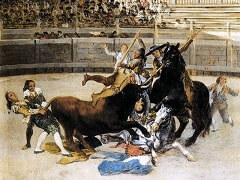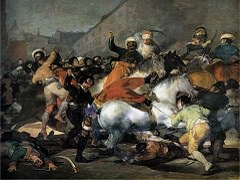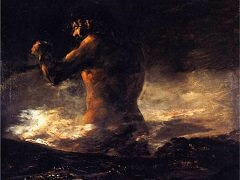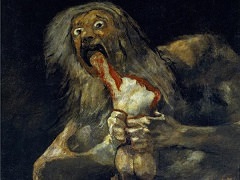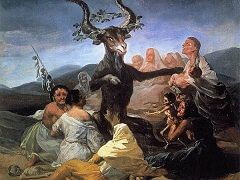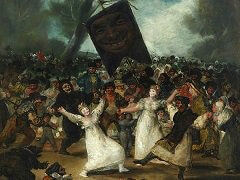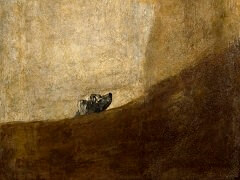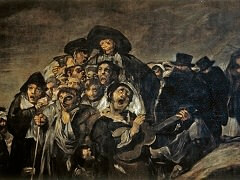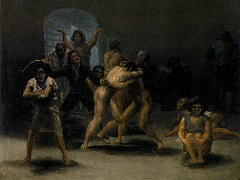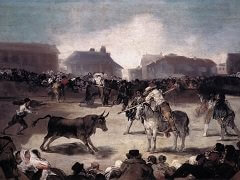Duchess of Alba, 1797 by Francisco Goya
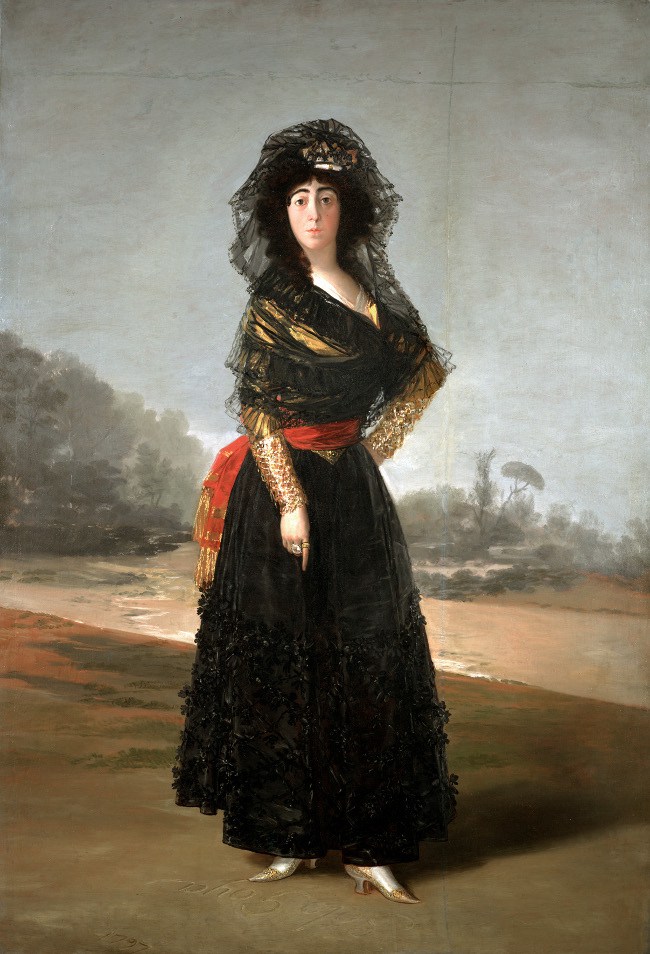
Duchess of Alba visited Goya in his studio one day and asked the artist if he would put on her make-up for her. "That is certainly more of a pleasure than painting on canvas!", Goya wrote to a friend. In the hierarchy of Spanish society, Duchess of Alba came directly after the Queen; the painter's humble origins, on the other hand, placed him on one of the lowest rungs. It was an unusual request, but it fits in with the Duchess of Alba's reputation as someone who was extremely attractive but also spoilt, egocentric and provocative. As one French-noted: "When she passes by, everyone goes to the window ...!" The Queen considered her to be "still as giddy as in her first flush of youth"
The make-up episode probably occurred in 1795, the year in which Goya ed the portraits of both the Duchess of Alba and her husband. She had been married to him when she was thirteen; they had no children. The Duke died in 1796. His widow withdrew, as custom demanded, to one of her country estates, the summer residence of Sanlucar in Andalusia. Goya followed her. Sketches, etchings and a painting are all the evidence we have of the months Goya spent the young widow in Sanlucar; nothing in writing, no allusions or anecdotes, no other woman appears in his art as frequently as the Duchess. Even those sketches from this period which do not specifically depict the Duchess are, in cases, still so like her that it is as if Goya were thinking only of her. Everything points to them spending their days together. The Duchess of Alba, 1797 documents how the artist saw her. He places her in a landscape - free of subsidiary detail, a sovereign figure dressed not in the latest French fashions, but as a maja, as if she were a woman of the people. Imperiously, she ponits at the sand beneath her feet, where the words "Solo Goya" - "Only Goya" written. On her fingers she wears a diamond into which the name "Alba" and a gold band on which the name "Goya" is clearly legible.
The painting claims that only Goya is important to her. The Duchess - from a certain, unknown point onwards, at least - may have viewed their relationship differently. She had just buried a husband she didn't love and was surely not willing to be tied down again straight away, at least not by an ugly, deaf, 50-year-old man of lowly birth. Perhaps the whole thing was just a game for her right from the start - a game on the one hand with the artist genius, and on the other with conventions. For her an affair, for him a catastrophe, both as a man and as a social climber who wanted to rise to the top.



